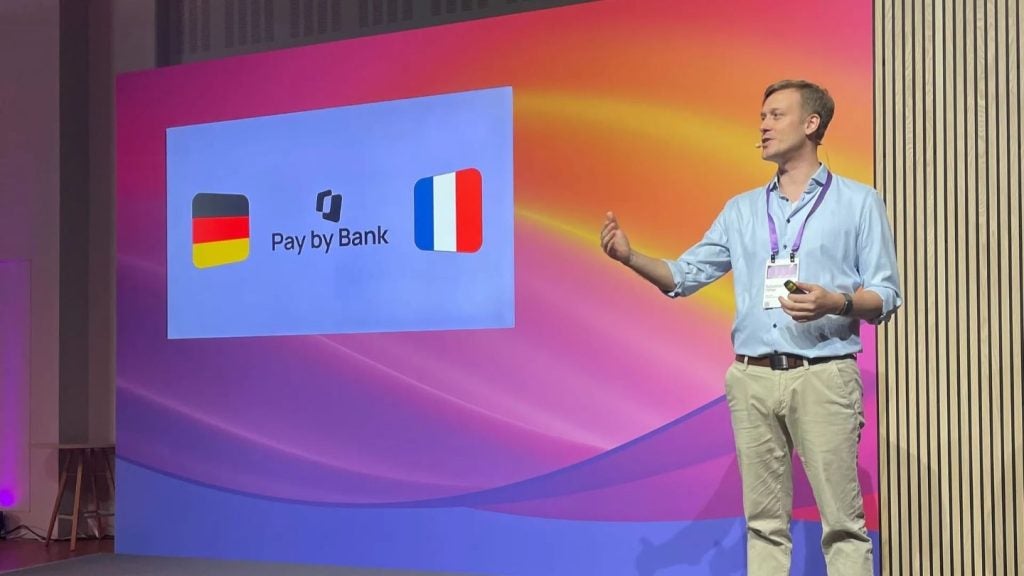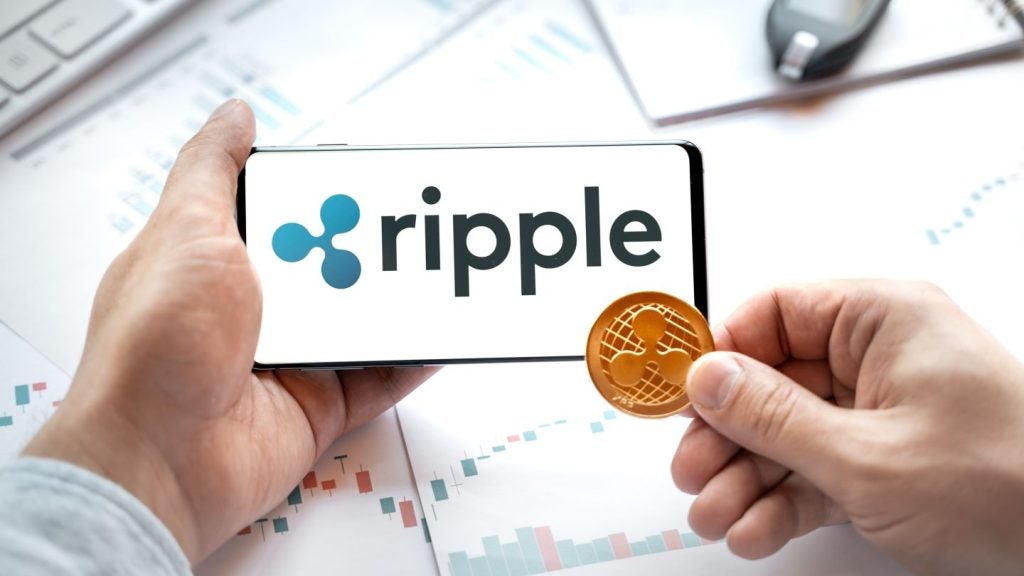Exclusive m-payments research conducted on behalf of VRL
and sponsored by MasterCard indicates there is a long way to go
before consumers are comfortable making transactions on mobile
phones. EPI asked the opinions of industry experts on the
findings. Will Cain looks at the results.
 The payments industry is
The payments industry is
largely up-beat about the prospects for the development of
m-payments, despite research showing consumers in Europe may not be
ready for the technology yet.
EPI research, sponsored by
MasterCard, showed only 27.2% of consumers in Spain, Italy, the UK
and Germany were interested in their phone becoming a payments
device (see opposite and Shining
a light on m-payments).
Industry experts say it will take
time for consumers to warm to the technology, particularly in
developed markets where banking customers are already offered a
variety of banking channels.
M-payments is one of the most
dynamic and keenly-followed areas of development in the industry.
Many banks in the US and UK are expected to introduce contactless
and m-payments products this year and next.

US Tariffs are shifting - will you react or anticipate?
Don’t let policy changes catch you off guard. Stay proactive with real-time data and expert analysis.
By GlobalDataAs Luke Olbrich, head of debit at
MasterCard Worldwide says, a more gradual approach, moving from
standard cards to smart cards and contactless cards and then to
mobile, looks the best way forward in more developed markets.
The EPI research indicates
that blistering adoption rates seen from m-payments provider MPesa
in Kenya is unlikely to be replicated across Europe, the US and the
parts of Asia with more developed banking and payments
infrastructures.
The success of m-payments in Africa
has been based on the ability of m-payments to match an unmet
demand for banking services of the country’s unbanked population.
Mobile phones have enabled payment providers in the country to
leapfrog investment in expensive, physical payments infrastructures
and banking networks by leveraging the ubiquity of a device already
in most people’s hands.
Current m-payments propositions in
Europe, the US and Asia are too faddy and based on the idea that
they are newer, faster and ‘cool’.
To gain widespread adoption,
consumers need to see clearly why the function will make payments
easier and more convenient.
Advanced, mobile-based rewards programmes represent one way to
do this – a tactic pursued by the more successful players in Japan.
Payments providers need to build these elements into their
m-payments strategies if the products are ever to be more than just
a ‘nice to have’.
 David Sear, managing
David Sear, managing
director, Travelex
Traditionally, the payments industry has dragged its feet when
it comes to innovation and adapting to developments in technology,
lifestyles and customer expectations.
This is reflected by the fact that
only 27.2% of consumers in Spain, Italy, the UK and Germany
surveyed are interested at present in their phone becoming a
payments device.
I am absolutely confident this will
change, but the rate of adoption will vary between markets and will
largely follow the growth of m-commerce.
In Western markets, banks and payments
institutions will need to adopt a flexible approach to mobile
payments, focusing on consumer behaviours and uses of technology in
their everyday lives.
In emerging markets the challenges and
opportunities are somewhat different and the market is defined by
the fact that the populations within these economies remain
unbanked creating a huge demand for mobile technology as a payment
mechanism.
Banks and payments institutions need
to work together to tap into the huge potential and create a robust
global payments infrastructure that supports mobile payments.
KPMG has forecast that the global
mobile money transfer market will be worth $21bn by 2011.
While there seems to be a lag in
western markets generally, all the indications are that we are on
the cusp of a major opportunity in the market place, an opportunity
which will no doubt be grasped by some of the more entrepreneurial
banks and innovative players in this area.
The era of watching and waiting is coming to an end and we will
see some definite moves by some players I am sure.
Phil Sorrell, product
director, ARC Mobile, Temenos
We are seeing a growing trend in banks looking to either adopt
or upgrade existing mobile channels. Banking and mobile technology
has developed so far over recent years that mobile now represents a
significant opportunity for banks to offer customers access to far
more than the limited banking services that have generally been
available to date.
Recent EPI research suggests
the majority of consumers are not interested or don’t understand
m-payments. Is this really surprising? Making a payment is not an
emotive decision, and does the consumer recognise a need to use
such a service?
Banks are right to invest in mobile
channels. The success of mobile banking and m-payments will rest on
the banks creating a greater need for consumers.
Banks have an opportunity to extend
their value proposition and give consumers a new need in
transacting using m-payments.
 Mary Carol Harris, head of
Mary Carol Harris, head of
mobile, Visa Europe
According to ITU World Telecommunication/ICT Indicators
Database, there were an estimated 4.6bn mobile phone subscriptions
in existence at the end of 2009. Given the ubiquity of mobile
handsets, their potential as a payments device is huge.
Most people who have a mobile phone
take it with them wherever they go. Visa’s research indicates 33%
of people would be less concerned about losing their wallet than
losing their mobile, which shows just how strong the attachment is.
This makes mobiles a natural and convenient device for payment.
Like any new technology, it will take
some time before consumers understand the benefits of paying by
mobile and often people need to see it in action before they are
fully receptive.
However, the response has been overwhelmingly positive among
those who have experienced mobile payments for themselves.
 Luke Olbrich, head of debit,
Luke Olbrich, head of debit,
MasterCard
Dragging someone who makes 80% of their transactions in cash and
moving them straight onto the mobile is something a lot of
consumers simply aren’t ready for.
Having said that, there is certainly
an opportunity for payment providers to benefit from a leapfrog in
terms of this technology. It can be a cheaper way for banks to
administer services and payments. We are seeing that in some
central and eastern European countries. It is about building the
habit, and once that is built I think the technology will develop
nicely. When we did research on our display card, a recently
launched debit card featuring a digital display, we asked whether
people wanted to be able to access their balance via SMS. It is
considered by most consumers as just too much.
They want their lives to be
simplified, but sometimes you may be asking consumers to change
their behaviour too far. There is certainly an audience for mobile
payments today, but our research shows the majority of consumers
are not quite ready for it. That is why we are pursuing both
card-based ‘display card’ type solutions as well as mobile
solutions.
There is a difference between making a card payment and actually
having your phone behave like a primary payment card – and there
are some distinctions there which are important.”
 Robert Kirby, CEO, Spendvision
Robert Kirby, CEO, Spendvision
It surprises me that some people still think we will never buy,
sell and do commerce using mobile devices. Remember, online
banking, text messaging and even email were once considered
idealistic concepts – look how far we’ve come today!
However, this disinclination is most
likely down to a simple lack of understanding, and our basic fear
of change. Without clear communication of the benefits of mobile
payments, it is unsurprising that most consumers will opt for the
familiar cash or card alternative.
From what I see, the biggest challenge
for the industry will be to eliminate the perceived complexity and
make the transition as easy as possible. Similarly, the problem
facing the business world is that the rise of disparate mobile
payments can make it harder to control costs.
However, successful companies of the future will embrace this
change and thrive on the use of one software platform to manage
payments – stripping away the layers of obsolete processes that
hold back the efficiency of commerce.”
 David Birch, director,
David Birch, director,
Consult Hyperion
I am always suspicious about these kinds of surveys, since they
are asking customers to project forward on the basis of the
technology they already have. Research shows global mobile payments
will grow from $68bn to $600bn by 2014.
So, there are certainly plenty of
other people that think mobile payments are looking pretty good
right now. If I were asked to point to one key reason why mobile
payments will grow to the levels noted here in the face of
(apparent) customer indifference noted above and in the
EPI research, it is simply that the key development in
payments technology is the ability of mobiles to receive payments,
be it peer-to-peer or from banks, or refunds from retailers.
We need to understand that mobile phones aren’t going to just
replace banks cards and cheques, they are going to replace cash.
That makes all the difference.
 Sanat Rao, vice-president
Sanat Rao, vice-president
and head of worldwide business development and alliances, Finacle,
an Infosys company
The concept of mobile payments is not new. The recent
EPI survey highlighted that consumers are reluctant to use
mobile payments and reasons for this vary.
Unwillingness to commit to mobile
payments is based on uncertainty around security. Mobile phones are
not seen as robust enough to safeguard payments data for example;
their susceptibility to theft is a real concern for consumer and
corporate users alike. As such, although the idea of mobile
payments is appealing, until users see a robust and secure example
of mobile payment technology in action, this hesitancy will
remain.
Having said this, there have been a
number of new developments in mobile technology and as such, there
has been a significant uptake in mobile banking as both consumers
and corporate entities are using mobile devices to access their
accounts and action payments on the go. This is viewed in a similar
vein to internet banking, and more popular because security is
still largely controlled by the banks.
However, to enhance security and encourage more consumer and
corporate users into the fold, banks need to use more robust
security measures, like multi-factor authentication techniques,
before granting access to accounts; as well as more intuitive user
interfaces which make the whole process easier.







